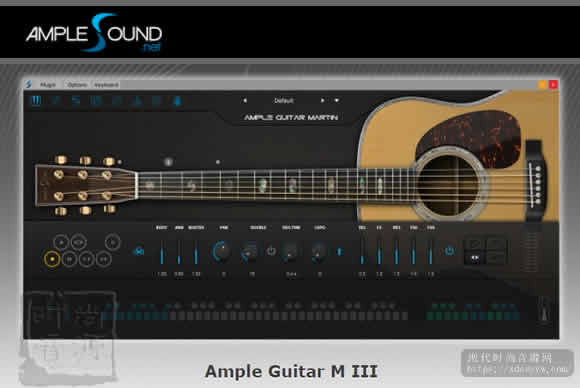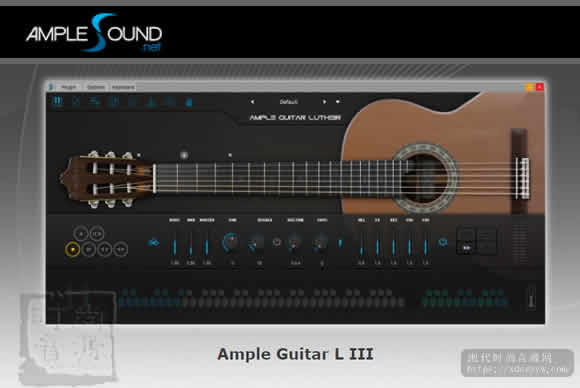![图片[1]-Producertech Beginners Complete Guide to Ableton Live [TUTORiAL] | 音色插件资源网-音色插件资源网](https://www.yinsebar.com/wp-content/uploads/2020/12/image-368.png)
P2P | 2020年10月9日| 1.71 GB
此《 Ableton Live完整初学者指南》在线课程为学生提供了开始使用Ableton Live制作音乐所需的所有知识。这些模块不仅在软件的所有主要方面都提供指导,而且还提供有关音乐创作,制作和演奏的更多常规信息。
在课程结束时,学生将掌握制作自己的曲目所需的所有基本技能,课程包括设置软件和干扰,调整和导出最终混音。甚至向学生介绍重要的声音创建方法,例如采样和合成,后者与Novation随附的经典Bass Station软件合成器一起使用。
要了解该课程,请查看目录选项卡,您可以在其中查看长达20分钟的完全免费的示例模块。
模块1-课程和Live基本概念
简介介绍课程样式和首选工作方法,然后进入Live的第一步,从首选项和设置开始,然后进入软件模式,布局,文件管理和浏览器,分析文件,音频格式和项目文件夹。
第2单元-在会话视图模式下
播放音频片段介绍如何通过触发,安排,复制和粘贴一起播放音频片段。然后研究速度控制和全局量化。还可以进行基本的剪辑编辑,例如变形,开始和结束位置的设置,循环。还介绍了凹槽和键映射。
模块3-如何创建和编辑MIDI剪辑
查看MIDI剪辑是什么以及可以如何创建MIDI剪辑,例如书写或播放。然后介绍如何编辑MIDI剪辑,重点放在音符的长度,音高,量化和力度上。还介绍了配音,并显示了将MIDI剪辑保存到浏览器中。
模块4-从会话到编排视图-从播放到制作
演示如何创建和使用场景,然后将轨道从会话切换到编排视图的不同方式,以帮助更好地理解一种模式与另一种模式的关系。涵盖了拖放操作,直接记录了曲目,然后介绍了基本的布局和编辑技术以及“排列”窗口中的导航。
单元5-录音
讲解录音的基础知识,例如如何设置音轨的输入和监听设置。显示节拍器以及可以记录音频的各种方式,例如使用数字记入或使用记录打入和切出。还显示了对已录制音频的处理和编辑,包括擦洗,分割,合并,无损编辑以及在轨道和剪辑视图中进行编辑之间的区别。
第6单元-处理音频-基本压缩和过滤
显示如何向轨道添加一个或多个设备以及如何对其进行管理,然后说明设备预设和热插拔。解释压缩的基础知识,并提供有关最重要参数的综合指南。还介绍了频率滤波和操纵的概念。
模块7-建立鼓音轨
描述使用Impulse构造节拍的过程。如何导入样本然后如何触发它们。如何编辑各个样本参数,例如衰减,音调,平移,滤波和饱和度。如何录制或录制节拍,然后如何对其进行编辑,以及添加压缩等处理。
模块8-混合音轨
Cover在Session和Arrangement窗口中与混合器一起工作,显示所有可用的不同参数。显示均衡,音轨分组,路由,发送/返回和各种混合技术。
单元9-现场直播
显示如何在“会话”视图中设置DJ的曲目。详细说明如何设置节拍标记和变形,然后说明如何设置音轨提示,如何使用交叉渐变器进行演奏。还显示了如何使用各种音频效果,例如DJ EQ和延迟。
第10单元-基本采样
介绍了什么是采样器及其工作方式。显示如何将声音导入Simpler,然后如何对其进行编辑,以显示修剪,移调和循环。引入包络,从幅度包络开始,然后移动到滤波器包络。简要显示了LFO调制和Sampler中可用的一些更高级的参数,例如图形包络编辑和多采样键盘映射。
单元11-合成简介
以随附的Novation Bass Station为例,说明合成的基础知识。显示每个合成器部分中可用的主要参数,展示振荡器波形和音高以及包络和LFO调制。最后说明如何使用这些知识来创建独特的程序。
第12单元-基本母带
介绍什么是母带,并显示各个阶段,主要集中在多频带压缩和限制上。还显示了“频谱分析”和“均衡器”,更精细的精炼技术以及如何导出最终轨道。
模块13-有关MIDI的更多信息-MIDI控制和效果
有关MIDI控制器的更多信息-它们是什么以及如何在Live中使用它们。显示MIDI映射模式和映射浏览器。还介绍了MIDI效果,主要集中在琶音器上。
第14单元-设备机架简介
介绍设备机架是什么,可用的不同类型以及链和宏控件的概念。教如何使用机架和Live的其他设备构建多频段压缩器。显示一些乐器架的示例。遍历鼓架,并显示如何使用它们编辑和构建节拍。
P2P | 09 October 2020 | 1.71 GB
This Complete Beginners Guide to Ableton Live online course provides students with all the knowledge necessary to start making music with Ableton Live. As well as being guided through all the main areas of the software, the modules also provide more general information about music composition, production and performance.
At the end of the course, students will have all the basic skills required to produce their own tracks, with the lessons going from setting up the software and jamming, right through to tweaking and exporting the final mix. Students are even introduced to important sound creation methods, such as sampling and synthesizing, the latter with Novation’s included classic Bass Station software synth.
To get a feel for the course, check out the contents tab where you can view the twenty minute long, totally free sample module.
Module 1 – Introduction to the Course and Live Basic Concepts
Introduces the course style and preferred working methods then moves onto the first steps with Live, beginning with the preferences and setting up and then moving onto the software modes, layout, file management and the Browser, analysis files, audio formats and Project folders.
Module 2 – Playing Audio Clips in Session View Mode
Covers how to play audio clips together by triggering, arranging, copying and pasting. Then looks at tempo control and global quantisation. Also basic clip editing, such as warping, setting of start and end positions, looping. Grooves and Key mapping are also introduced.
Module 3 – How to Create and Edit MIDI Clips
Looks at what a MIDI clip is and the various ways it can be created, such as writing or playing. Then how to edit a MIDI clip, focussing on note length, pitch, quantisation and velocity. Also introduces overdub and shows saving of MIDI clips into the Browser.
Module 4 – Moving From Session to Arrangement View – From Playing to Producing
Shows how to create and work with Scenes, then the different ways that tracks can be shifted from Session to Arrangement view, to help better understand how one mode relates to another. Covers dragging and dropping, and recording tracks in directly, then basic layout and editing techniques as well as navigation in the Arrangement window.
Module 5 – Recording Audio
Explains the basics of audio recording, such as how to set up a track’s input and monitoring settings. Shows the metronome and various ways that audio can be recorded, such as with a count-in or using record punch in and out. Also shows the handling and editing of recorded audio, including scrubbing, splitting, consolidating, non-destructive editing and the differences between editing on the track and in the clip view.
Module 6 – Processing Audio – Basic Compression and Filtering
Shows how to add one or more devices to tracks and how to manage them, then explains device presets and hot swapping. Explains the basics of compression, and provides a comprehensive guide to the most important parameters. Also introduces the concept of filtering and manipulating of frequencies.
Module 7 – Building a Drum Track
Describes the process of constructing beats using Impulse. How to import samples then how to trigger them. How to edit individual sample parameters, such as decay, pitch, panning, filtering and saturation. How to record or write in a beat, then how to edit it afterwards, as well as add processing like compression.
Module 8 – Mixing a Track
Covers working with the mixer in both the Session and Arrangement window, showing all the different parameters available. Shows equalisation, track grouping, routing, sends/returns and various mixing techniques.
Module 9 – DJing with Live
Shows how to set up tracks for DJing in the Session view. Explains more about setting beat markers and warping, then how to set up cueing of tracks, how to perform with the crossfader. Also shows how to use various audio effects like the DJ EQ and delays.
Module 10 – Basic Sampling
Explains what a sampler is and how it works. Shows how to import sounds into Simpler and then how to edit them, showing trimming, transposition and looping. Introduces envelopes, starting with amplitude envelopes and moving onto filter envelopes. Briefly shows LFO modulation and some more advanced parameters available in Sampler, such as graphical envelope editing and multi-sample keyboard mapping.
Module 11 – Introduction to Synthesizing
Explains the basics of synthesizing using the included Novation Bass Station as an example. Shows the main parameters available in each synth section, demonstrating oscillator waveforms and pitch, and envelope and LFO modulation. Ends by showing how to use this knowledge to create unique programs.
Module 12 – Basic Mastering
Explains what mastering is and shows the various stages, focussing mainly on multiband compression and limiting. Also shows Spectral Analysis and EQ, more subtle refining techniques and how to export your final track.
Module 13 – More on MIDI – MIDI Controlling and Effects
Explains more about MIDI controllers – what they are and how they can be used within Live. Shows MIDI map mode and the mapping Browser. Also covers MIDI effects, mainly focussing on the Arpeggiator.
Module 14 – Introduction to Device Racks
Explains what a device rack is, the different types available and the concept of chains and macro controls. Teaches how to build a multiband compressor using a rack and Live’s other devices. Shows some examples of Instrument Racks. Runs through Drum Racks and shows how to edit and build beats with them.


![[三体中国民乐全套 效果器合集] 古风中国风编曲必备 R2R [WiN, MacOSX](40GB+)稳定运行版本-音色插件资源网](https://www.audioba.com/wp-content/uploads/2024/12/20240725195002777-QQ_1721908198947-734x550-1.png)

![[最新Ample吉他3代音色免安装25套合集]Ample Guitar Bass v3.7.0 [WiN, MacOSX](77.1GB+)-音色插件资源网](https://www.audioba.com/wp-content/uploads/2024/11/ample-sound.jpeg)
![[智能自动编曲软件 ]band in a box 2024 中文汉化完整版+安装方法 [WiN](201GB+)-音色插件资源网](https://www.audioba.com/wp-content/uploads/2024/10/Band-in-a-Box-10.jpg)










